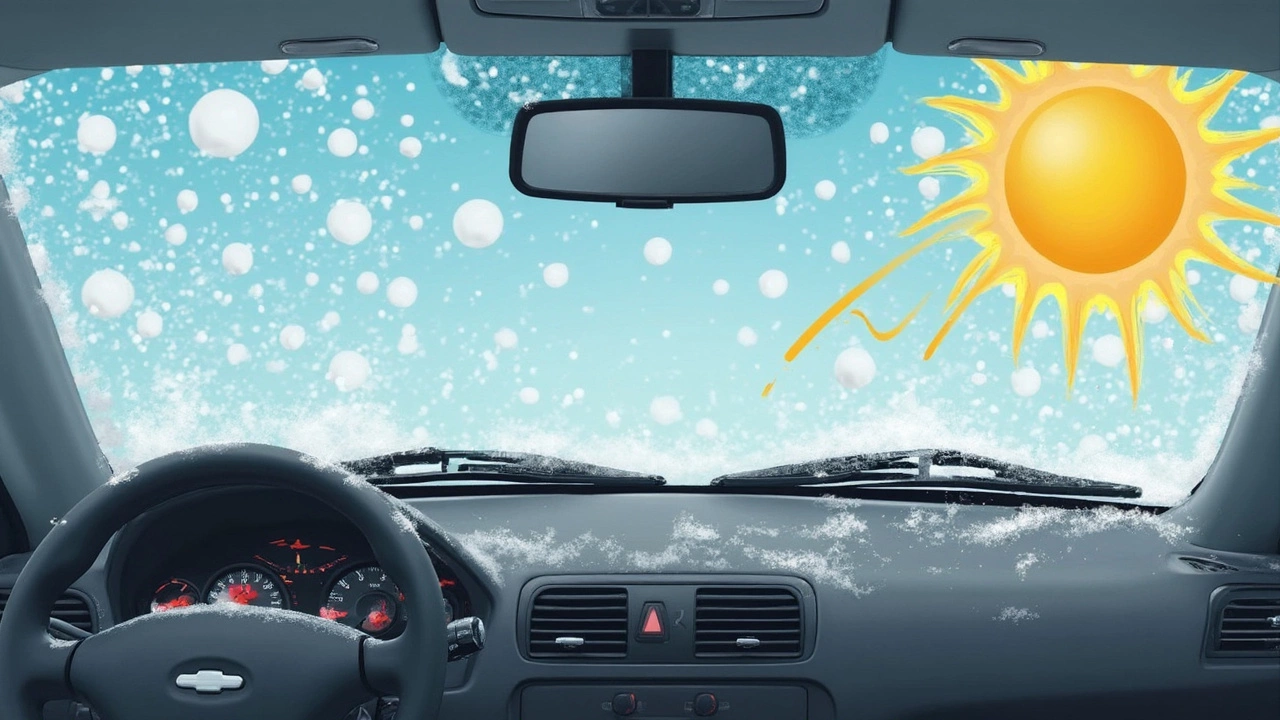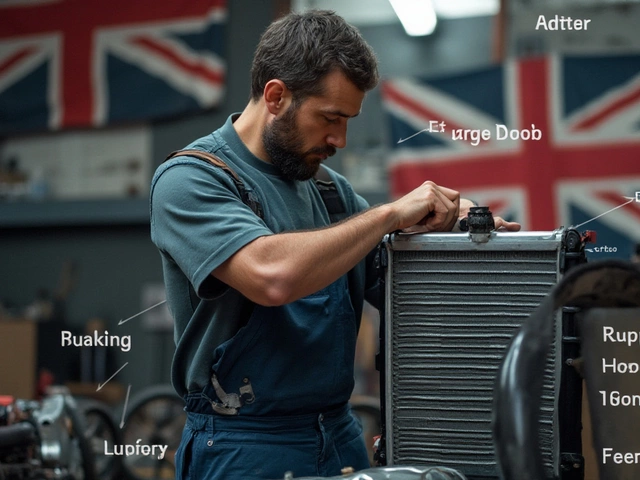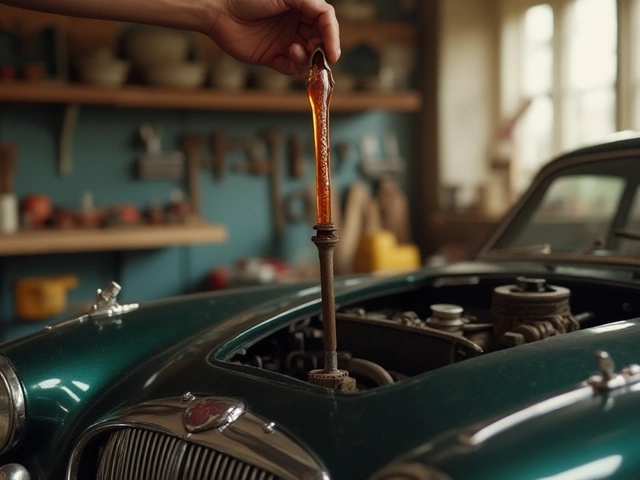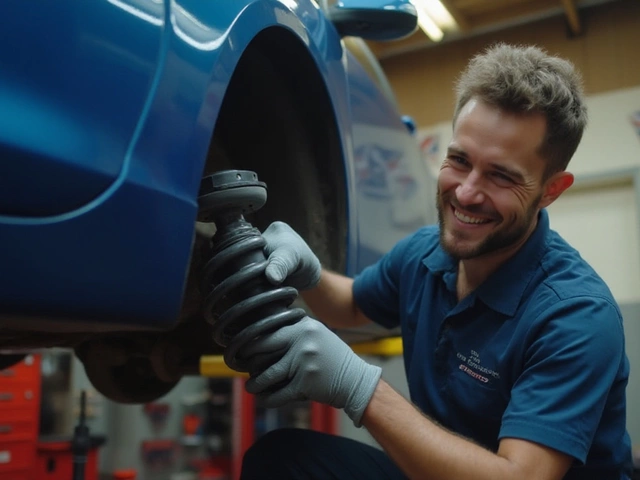Ever wondered why your wiper blades keep calling it quits? Well, it's not just bad luck; there's a reason they wear out faster than other car parts. Let's get to the bottom of what speeds up their demise.
Wiper blades are out there braving the elements, sun, rain, snow, you name it. They're designed to remove water and debris from your windshield, but all that rubbing against the glass takes a toll. The sun's UV rays can bake them, rain can leach chemicals into them, and snow and ice can make them brittly. Even dirt on the windshield can add extra wear.
Then there's the matter of what they're made from. Most wiper blades incorporate rubber, which is excellent for wiping water away but isn't so great withstanding the elements for too long. It hardens over time, cracks, and loses its flexibility. The rubber edge, essential for that squeaky-clean wipe, can wear down surprisingly quickly.
The Elements' Toll
Think about this: your wiper blades face the elements 24/7. They deal with more weather changes than a weather forecaster! All this exposure to sun, rain, snow, and wind leads to one outcome—fast wear and tear.
Sun, UV Rays, and Heat
Parked outside on a hot summer day? That blazing sun isn't just making your seatbelt too hot to touch; it's also wreaking havoc on your wipers. The sun's UV rays cause rubber to degrade, leading to brittle and cracked wiper blades. Heat can warp them too, affecting their performance.Rain and Moisture
Those rainy days don’t just make your hair frizzy; they're tough on wiper blades too. Water and moisture create the perfect environment for rubber to break down. Plus, constant wiping against the glass during rain leads to friction, which, over time, wears the blades down.Snow and Ice
Winter? It's no holiday for your wiper blades. Snow and ice can stick to the blades, adding extra weight and stress. Using them to clear off snow and ice isn't what they're made for, and this extra tension can shorten their lifespan significantly.Dirt and Debris
Riding around with a dirty windshield? All that grime is like sandpaper to your blades. Tiny abrasives in the dirt scratch and sever the rubber edge, causing it to fray and lose effectiveness. It's like using a worn-out eraser on a piece of paper!So, what can you do? Whenever possible, park your car in the shade or a garage to shield those wipers from the sun. After driving on a rainy or snowy day, give them a quick wipe with a cloth to remove residue. And for crying out loud, don't use them as ice scrapers!
Material Matters
When it comes to wiper blades, what's on the outside matters just as much as what happens on your windshield. Most wiper blades are made from rubber or a combination of rubber and silicon. While these materials are flexible and perfect for squeegeeing rain away, they aren't invincible against time or weather.
Rubber vs. Silicone
Rubber blades are the most common because they're effective and cost-efficient. But rubber—being a natural material—can break down with UV exposure, heat, and chemicals from cars and the environment. After so much exposure, it turns brittle, leading to those annoying streaks and skips on the glass.
Silicone, on the other hand, has been gaining traction as a material for windshield wipers. It's more resistant to extreme temperatures and UV rays, which means it holds up better over time. Although silicone wipers might come with a higher price tag, their durability can be worth it in the long run.
Hybrid Blades
Some manufacturers offer hybrid blades that combine the strengths of both rubber and silicone. These blades aim to provide the wiping efficiency of rubber with the weather resistance of silicone. They're pricier but offer a balanced performance, potentially saving you money on replacements.
Want to make your wipers last longer? Consider the material when you buy. If you live somewhere with harsh weather, investing in silicone or hybrid blades could bring you longer-lasting clarity.
| Material | Pros | Cons |
|---|---|---|
| Rubber | Affordable, Effective | Prone to weather damage |
| Silicone | Durable, Weather-resistant | Expensive |
| Hybrid | Durable, Balanced performance | Costlier |

Signs of Wear
So how do you know when it's time to bid farewell to your trusty wiper blades? Recognizing the signs of wear can save you from those unexpected downpours where you realize, a bit too late, that your wipers can't handle the job.
Streaking and Smearing
If your windshield is left with streaky, smeared messes after the wipers have done their dance, that's a sure sign they're wearing out. Blades should be wiping the windshield completely clean. If they're not, they need a check-up or maybe even a swap.
Chattering Sounds
A well-functioning wiper blade should glide smoothly across the glass. If they're making a chattering or squeaking noise, it means they're not making consistent contact with the windshield. This could be because the rubber is hardening or because of other irregularities along the blade.
Splitting Rubber
Have a good look at the edge of the blade. If you see any visible splits or cracks in the rubber, that's a major sign of wear. Without a smooth edge, the blades simply can't clear water effectively.
Reduced Visibility
If your vision is still blurry after using the wipers in light rain or if they fail to clear off heavy downpours quickly, it's time to consider replacements. Safety comes first, and good visibility is crucial.
| Symptom | Possible Cause |
|---|---|
| Streaking | Worn blade edge |
| Chattering | Irregular contact |
| Splitting | Hardened rubber |
Remember, keeping an eye on these signs can help you decide when to replace your wiper blades, long before you're caught in a heavy rainstorm without a way to see the road ahead clearly.
Prolonging Wiper Life
It's a real hassle when your wiper blades fail, especially when you need them the most. Let's talk about a few ways you can make them last longer and save some cash in the long run.
Regular Cleaning
Start with the basics: clean both the blades and the windshield regularly. Dirt and debris can grind the rubber down, so a simple wipe with a cloth dipped in a mixture of water and a bit of vinegar can do wonders. This helps in keeping that crucial edge sharp and ease friction with the glass.
Avoiding Extreme Temperatures
If possible, try to park your car in the shade or a garage. Excessive sunlight breaks down the rubber faster. In freezing temps, lift your wiper blades off the windshield to prevent them from freezing to the glass.
Replacing Blades Regularly
Even with the best care, wiper blades are not forever. Replace them at least once a year, or sooner if you notice streaks or squeaking sounds. Consider setting a reminder on your calendar to check them at the start of autumn and spring.
Choosing the Right Blades
Not all wiper blades are created equal. Spend a bit more on quality materials like silicone because they tend to last longer than regular rubber. They might cost more upfront, but they save on frequency of replacement.
Using a Windshield Protector
Sometimes the best defense is a good offense. A windshield protector can reduce the wear and tear on your wiper blades by shielding your windshield from dirt and extreme weather conditions.
By incorporating these tips into your routine, you'll help ensure that your wiper blades are in good shape when a downpour hits. It not only keeps you safer but also cuts down on the nuisance of frequent replacements.

When to Replace
Picture this: you're driving and it starts to pour. You turn on your wipers, and instead of that clear, streak-free view you expect, you get smears and smudges. That's your cue—those wiper blades are past their prime.
So, how often should you replace them? A good rule of thumb is every six to twelve months. But don't just rely on the calendar—keep an eye out for these telltale signs:
- Streaking or skipping windshield: If it looks like your wipers cleaned with a butter knife, it's time.
- Squeaking sounds: Annoying screeches mean your blades may have lost their edge.
- Visible cracks or wear: If the rubber is looking rough, it's time to swap them out.
- Ineffective performance in reducing glare: At night, headlights from oncoming traffic should not appear overly glaring if your wipers are doing their job.
Feeling like a pro at changing your blades? If you're not into DIY, consider making it a habit to check your wipers when you get your oil changed. Many service centers do this as part of their basic inspection.
Also, if you're in a location with extreme weather, be it hot, cold, or rainy, those elements can speed up wear. You might be looking at the shorter end of that six-month replacement window.
And here's a handy tip: Don't wait until your blades are completely shot. Regular inspection and timely replacement can save you tons of hassle, especially during those unexpected downpours when visibility is everything.




